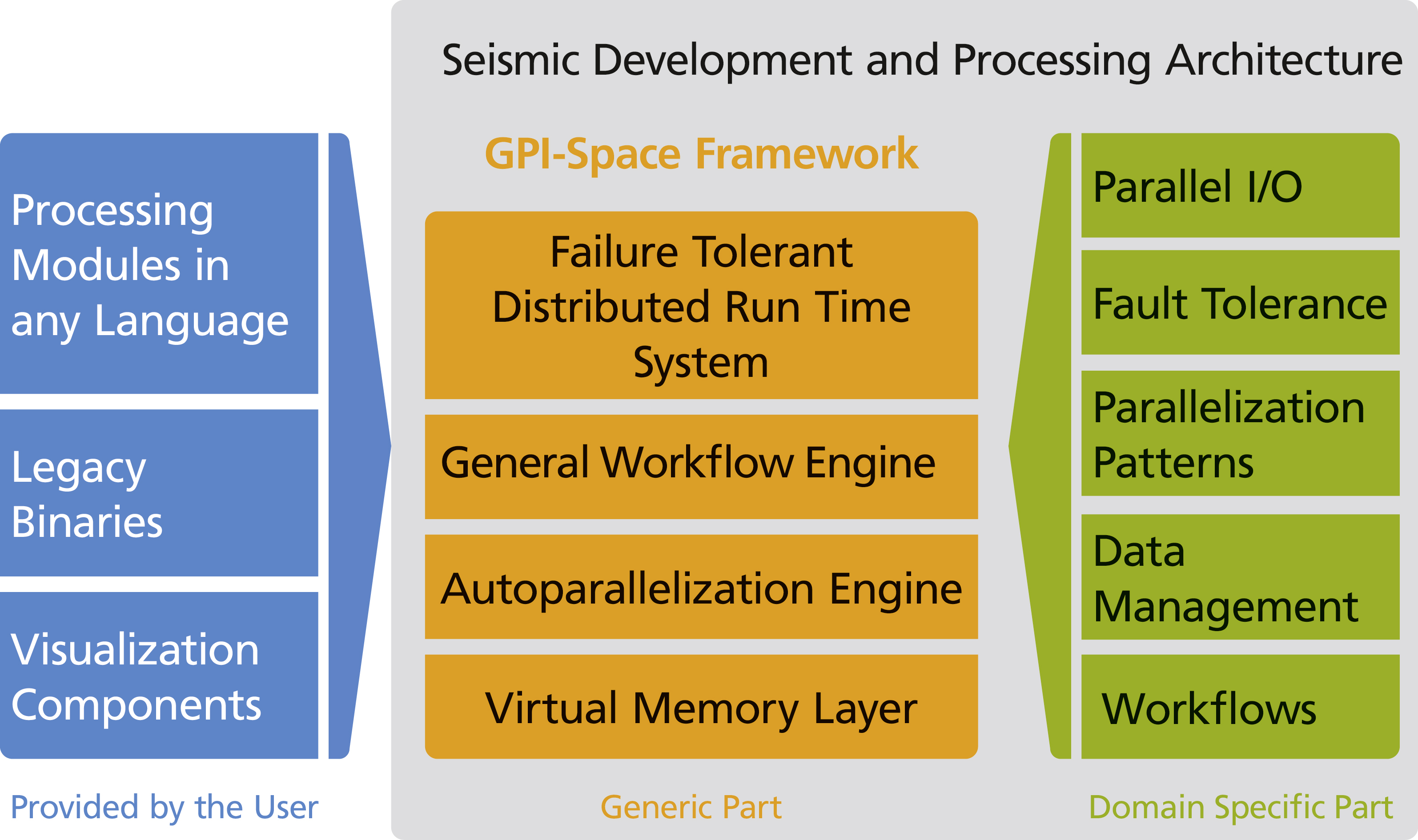More Than Just a Distributed Runtime System
The platform supports the creation of the software models with graphical editors, a functional language and a comprehensive set of common workflows. The workflows used to control GPI-Space are based on Petri nets, a The workflows used to control GPI-Space are based on Petri nets, a suitable formalism specifically for describing dynamic, distributed and parallel processes.
suitable formalism specifically for describing dynamic, distributed and parallel processes
The distributed runtime environment leverage the inhouse developed Global Address Space Programming Interface (GPI) - Fraunhofer's scalable, fast and efficient PGAS layer. It provides a virtual environment in which compute nodes are able to independently access the memory of other compute nodes in a non-blocking, asynchronous way.
High Performance Data Analytics (HPDA)
All components of GPI-Space are based on technologies and developments from the high-performance computing domain. This ensures the highest possible performance and flexibility. The virtual memory is independent of specific applications and allows their simple and direct coupling. Data stored in virtual memory can be accessed by arbitrary applications and hardware ressources like CPUs, NVIDIA GPUs or Intel XEON Phi.
The GPI-Space operating environment is not only fault tolerant, but also fully interactive and allows you to change the size and structure of the machine used during the runtime, or to use the optimal topology for the different phases. That is another big advantage over existing solutions. The runtime system enables the coupling of legacy applications and kernel modules to form new application workflows.


